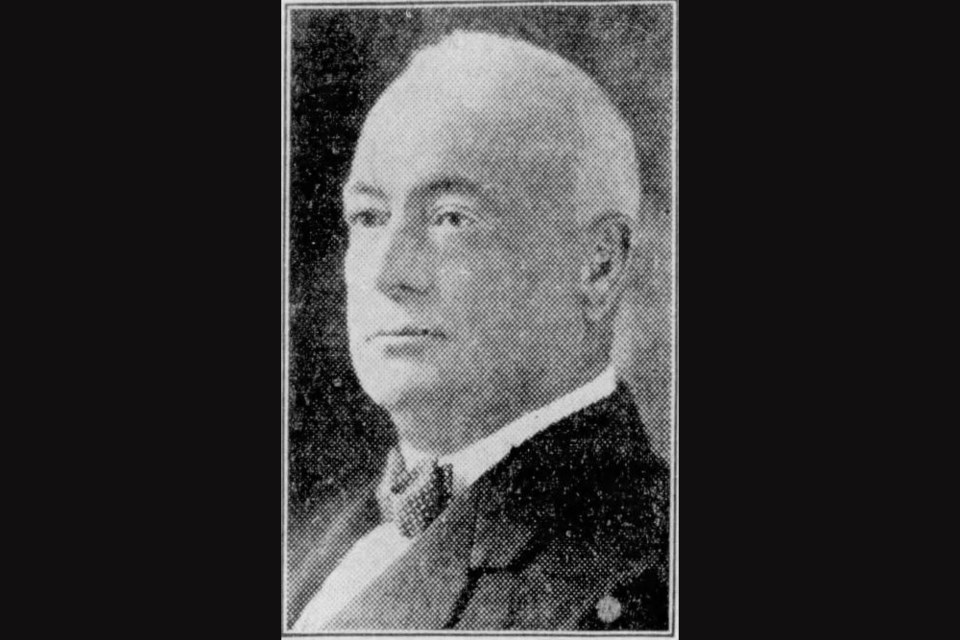From the archives of the Sault Ste. Marie Public Library:
Though hockey takes centre stage for athletics in Sault Ste. Marie, perhaps one of Sault Ste. Marie’s most decorated athletes, according to a Sault Star article on January 9, 1933, was shotput champion George Gray.
George Gray wasn’t only a talented athlete but also a successful businessman. He was born in Coldwater, Ontario, Canada on May 4, 1865 and went to high school in Orillia. Soon after completing school, he began his first logging job at Wahnapitae.
“I didn’t make any money that first winter, but I learned a lot of things they didn’t teach at school,” he told the Star.
He would join the Spanish River Company when it began in 1902; in 1913, he was promoted to manager of the Woods Department. There, he would be elected as Director of the Spanish River Company in 1919, and in 1928, was appointed Vice President of Abitibi Power & Paper Company.
His athletic prowess was perhaps what George Gray was best known and celebrated for.
George was introduced to athletics when he arrived in Toronto. He began practicing in his backyard in Coldwater, and when he threw his 16-pound shotput half an inch further than the world record, Jim Lazonby wrote in the Orillia News-Letter that “George Gray would show those Toronto Fellows a thing or two about weight throwing one of these days.”
No one believed Lazonby, however, after his failed attempt as a 'weather prophet.'
At the age of 20, George Gray arrived in Toronto. He didn’t belong to any athletics clubs, and weighing in at 170 lbs., he didn’t particularly look like an athlete, according to John Johnston, a Toronto wholesale employee who had heard about Gray’s throwing ability. However, one of the farm boys stated that Gray could beat the world record.
When Johnston asked why he didn’t enter an upcoming competition, Gray simply stated he didn’t know how to go about doing it and that the entrance fee was $2. In 1885, $2 was approximately half a week’s wages, and Gray couldn’t afford it.
John Johnston decided to help and told Harry Brock, who was the Secretary of the Canadian Amateur Association. However, Brock had forgotten, and when George arrived at the grounds, his name was absent from the event.
George Gray pleaded his case, which started an argument from the American, English, and Irish athletes, who stated he shouldn’t be able to participate in the event.
Harry Brock vouched for George Gray, saying that George Gray had indeed paid, and he had forgotten to add his name. The 240 lbs. Irish champion took one look at George and laughed, saying, “Ah, let the kid enter.”
Gray was up against W. J. M. Barry, the champion from Ireland; Owen Hal, English champion; C. A. J. Queckberner, American Champion; the American record holder, F.L. Lambrecht; and an additional eight other competitors.
Gray was the last to throw, with W. J. M. Barry in the lead at 42 feet. Gray’s throw landed five and a half inches beyond the Irish champion. The men had three tries to best Gray’s throw but were unable to beat his distance. The next day, Gray realized he was the champion, a title which he held for 17 years.
In 1888, he travelled to England and Ireland, where he won both titles. In Ireland, he won the competition with a distance of 44 feet and 10 inches.
During his 17-year reign, he only missed one competition in 1898, when he contracted Typhoid fever.
His dominance was so complete, he never lost a competition during his 17 years of competing. He won 188 medals and prizes, with over 10 being from championships, when he retired from competing in 1902.
Each week, the Sault Ste. Marie Public Library and its Archives provide SooToday readers with a glimpse of the city’s past.
Find out more of what the Public Library has to offer at www.ssmpl.ca and look for more "Remember This?" columns here.
